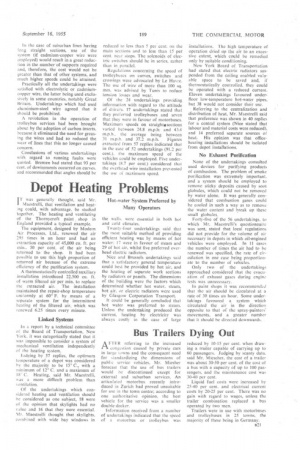GOOD,VEAkil
Page 54

Page 55

If you've noticed an error in this article please click here to report it so we can fix it.
In the case of suburban lines having long straight sections, use of the system (if cadmium-copper wire were employed) would result in a great reduction in the number ofsupports required and, therefore, the cost would not be greater than that of other systems, and much higher speeds could be attained.
Practically all the undertakings were satisfied with electrolytic or cadmiumcopper wire, the latter being used exclusi\ el}, in some countries, notably Great Britain. Undertakings which had used aluminium-steel wire agreed that it should be prohibited.
A revolution in the operation of trolleybus services had been brought about by the adoption of carbon inserts, because it eliminated the need for greasing the wires and had so reduced the wear of lines that this no longer caused concern.
Conclusions of various undertakings with regard to running faults were quoted. Bremen had stated that 93 per cent, of dewirements occurred on curves. and recommended that angles should be reduced to less than 5 per cent. on the main sections and to less than 15 per cent. near stops. The solenoids of electric switches should be in series, rather than in parallel.
Regulations concerning the speed of trollcybuses on curves, switches and crossings were advocated by Le Havre. The use of wire of more than 100 sq. rim. was advised by Tunis to reduce tension losses and wear.
Of the 24 undertakings providing information with regard to the attitude of drivers. 17 undertakings stated that they preferred trolleybuses and seven that they were in favour of motorbuses. Maximum speeds on straights sections varied between 24.8 m.p.h: and 43.4 m.p.h„ the average being between
31 m.p.h. and 37.2 m.p.h. Figures extracted from 57 replies indicated that in the case of 52 undertakings (91.2 per cent.). the maximum speed of the vehicles could be employed. Five undertakings (8.7 per cent.) considered that the overhead wire installation prevented the use of maximum speed.




































































































